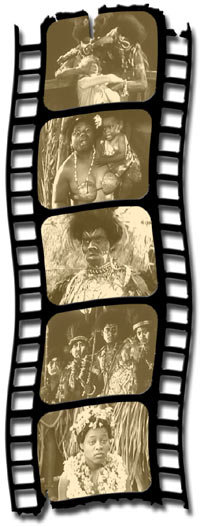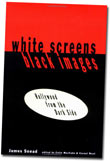
There are many elements of the original King Kong
film that are very much “of their time”: the bombastic acting
style; ‘30s-era slang (“sinkers,” anyone?); simple solutions
to complex problems (ape on building? Shoot him off!); men wearing
snap brim fedoras in the jungle; simple damsel in distress theme;
guys arbitrarily driving into the sides of buildings (this evidently
happened quite a bit in the ‘30s).
One of the more unpleasantly dated elements in Kong
is, of course, its treatment of the non-white world in general.
The film is certainly no more racially insensitive than other
show biz portrayals of blacks during the era (“Amos & Andy,”
blackface minstrel shows, etc.), but the fact that the movie
and story have endured for so long has made relevant some of
the choices and assumptions made in the basic plot of the film—a
real challenge to anyone attempting to re-tell the story for
a modern audience.
The main plot problem is, of course, the assumption made
in the film that a Caucasian, blonde woman is all that is needed
to sooth the primal savagery of a giant beast-god. None of the
dozens (hundreds?) of kinky-haired, dark-skinned maidens who
came before made any impression whatsoever. Now, the argument
can be made that the mere visual novelty of Ann Darrow was enough
to knock Kong off his game, but I would argue that the producers
did not have that in mind. The subtext is fairly blunt: Ann
Darrow represents the “deluxe model” for Kong after years of
nothing but “plain old native girls.” It’s not a pleasant thought,
but those were different times.
That non-politically correct era also led to expediencies
when it came time to populate the “native village” on RKO’s
back lot. Though Skull Island was ostensibly located west of
Sumatra in the Indian Ocean—a region known as Indonesia—it was
far easier for the producers to suit up African-American actors
than search for Indonesian or Polynesian extras. (To see wonderful
pictures of the people of this region, click HERE
for amazing photos from the Nias Islands circa 1915 taken
by a “Dr. Phil. Hagerup.”)
And, of course, there is the matter of wardrobe. There is
no record of any real thought going into the look of the natives—no
sketches or memos describing a specific concept— and they seem
to be wearing fairly generic “jungle outfits” ordered up from
the central racks (not to mention wigs, one of which is seen
snagged and removed by an overturned chicken coop in the final
film).
And, of course, let’s not forget two words forever fused
with King Kong: coconut bra.
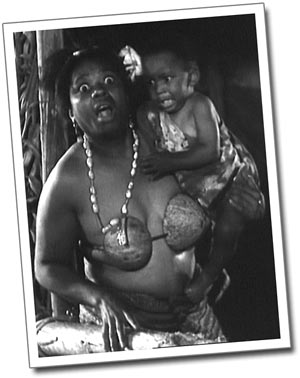
Black actors and actresses from that period remember that
nearly everyone of color at Central Casting was sent to RKO
for the seven dollar a day “Skull Island Native” gig. Musician
Buck Clayton recalls being unable to pass a test once he got
on the lot. “The casting people asked us to all line up. We
got in line and they began selecting people from the line. It
seemed to me they were taking everybody until they got to me.”
Evidently Clayton, who was lightly complected, did not
match Hollywood’s vision of a “native.”
Conversely, in the book White Screens Black Images: Hollywood
from the Dark Side, the authors claim that “due to some
mix-up, or shortage of extras, the [native village] gorilla
dance is being performed by whites.” (Emphasis theirs.) This
is impossible to confirm, but certainly within the realm of
possibility.
Meanwhile, the light-skinned Noble Johnson was heavily made
up for his role as the village chief—he was a leading black
actor of the era (known as “America’s premiere Afro-American
screen star” in the black press) and therefore worth the extra
consideration. Johnson, an ex-cowboy, horse trainer, and boxer,
had quite a resume before portraying the Chief of Skull Island.
He was a student of all aspects of moviemaking from directing
to distribution, and instrumental in the 1916 formation of the
Lincoln Motion Picture Company, created to produce what were
called “race movies.” Johnson left the company after it had
released three films, rumored to have been “encouraged” by Universal
to do so or lose any opportunity for parts at the bigger studio.
Johnson - a childhood friend of Lon Chaney - portrayed a variety
of ethnicities in his long career; one of the few black actors
of Hollywood’s early era to be allowed any diversity in roles.
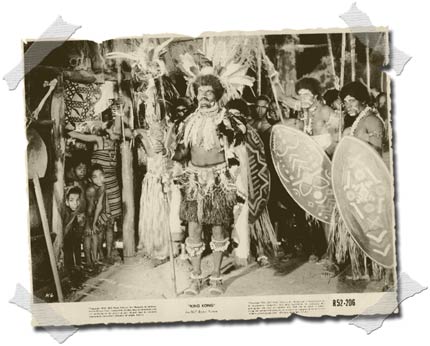
The rumor that Native American multi-sport athlete Jim Thorpe
appeared as a Skull Island extra is appearently true. This would
have happened nearly five years after his last year in professional
sports (playing baseball with the Chicago Cardinals), and Thorpe
was said to have been pursuing work as an extra to supplement
his income. While no one has ever been able to identify Thorpe
in the film, we can be reasonably sure that, in his mid-forties,
he was still able to outsprint the big ape.
According to Spawn of Skull Island, Kong production
assistant Archie Marshek identifies black actors Ray Turner
and Harold Knox as the natives who could not outrun Kong
and were consequently trampled underfoot in the most literal
sense possible. As the story goes, one of the men fled the set
after being ground into the studio floor by the massive foot,
exclaiming, “I’m THROUGH, Boss! I just saw St. Peter a-reachin’
for his fountain pen.” Though the footage in the film indeed
looks pretty authentic (Kong stomps and twists as if putting
out a cigarette, and the hapless squishee looks convincingly
scared out of his wits), the “St. Peter” quote sounds fairly
contrived.
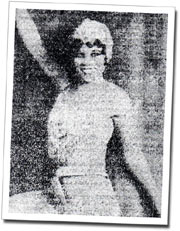 |
Mildred Washington
- The Sensation of the West |
|
There was a little-known tragedy attached to King Kong
that occurred just prior to the film’s release. During rehearsals
for the elaborate stage spectacle that accompanied Kong’s
debut at the Egyptian Theater—another showcase for “Skull Island
natives”—an earthquake struck Los Angeles. Mildred Washington,
a well-known, up-and-coming black film actress and nightclub
entertainer, fled the theater and hurt her foot. At the hospital
she suffered from appendicitis, developed peritonitis and died—an
unexpected loss sorely felt by the community of black entertainers.
As for Peter Jackson, he has thus far hinted at a very different
and frightening kind of island native for his version of King
Kong - a far cry from the “stock characters” seen in
the original film. Though Mr. Jackson is fond of paying homage
to the original in clever ways, we may rest assured that no
coconuts were halved and donned in the making of his film.
(Writer John Michlig's online article KING KONG: LOST AND FOUND can be seen at http://www.skullisland.net/KongBoomer.html. He's currently working with filmmaker James Mansfield on a documentary entitled EIGHTH WONDER: THE AMAZING TRUE STORY OF CARL DENHAM AND THE BEAST-GOD OF SKULL ISLAND, the startling details of which he promises to share in the very near future.)
THE KONG FILES and contents are © 2004-2006 John Michlig and written for KongisKing.net, subsidary of The One Ring®, Inc.
|




